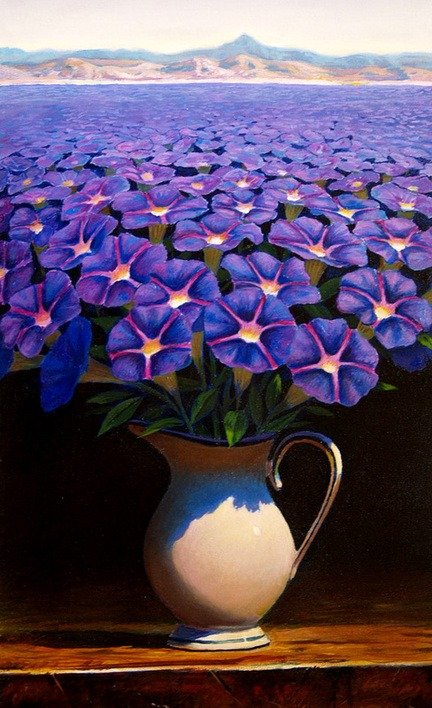As we kick off Sparkling December (the Instagram Aesthetic of the Month,) I decided to write about an art movement that seamlessly incorporated fantastical elements into everyday scenes, resulting in paintings that depicted life fused with magic. Mainly because December reminds me of everything magical and mystical, in all its fairy light glory.
An art movement based on the term “Magic Realism” that was coined in 1925, by German photographer, Art historian and critic, Franz Roh; it was one of the few art movements that adapted to various art forms, such as literature, painting and film.
Magic Realism was popularised by artists who were trying to move away from a more expressive style of art, trying to go back to the 19th Century Italian- Renaissance art form, known as Classicism. Most artists even used Egg Tempera to paint in this style, as a way to marry the two art movements together. It was seen as a protest to the avant-garde art styles, such as Surrealism, that preceded it, in the early 1920s.
Although it started in Central Europe (Germany and Italy,) Magic Realism slowly made its way to America in the 40s/50s, finding a place in Latin American literature, with writers such as Gabriel García Márquez and Jorge Luis Borges.
It is the perfect mélange of Realism and Surrealism. Depicting realistic concepts in a “naturalistic technique that are combined with surreal elements of dream and fantasy.” Magic Realists made sure to distinguish themselves from Surrealists, by portraying magic and extraordinary elements as ordinary occurrences, blending them effortlessly with realistic landscapes.
The narrative of a Magical Realistic painting always remained ordinary, but the artists paid more attention to adding techniques such as distortion of space, juxtaposing of objects or hyperrealism than adding symbols or made-up, fantastical elements, which result in artworks that are more universally understood.
Artwork by Ernesto Arrisueño
